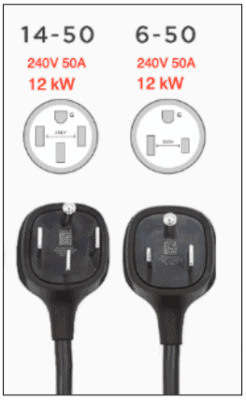| This document is written for the US market and uses the US electric system and American nomenclature. It provides general information about apartment building EV charging. Any specific installation should be designed by a certified electrical designer and adhere to all local and federal regulations. Installations should always be performed by licensed electricians. |
Scaling up apartment building EV charging is much needed. Per the National Multifamily Housing Council, there are over 43 million renters in the United States. Of which, over 15 million live in apartments. With the electric vehicle (EV) rising in popularity, many of them want access to charging an EV at an apartment complex.
One of the biggest barriers to owning an EV can be the lack of charging infrastructure. Many landlords or HOAs that own and regulate building and site improvements already understand the need for apartment building EV charging and the fact that this can be a good investment. However, installing and operating EV chargers in apartment buildings can be very complex and expensive due to the lack of electrical infrastructure in the parking lot.
This article covers the basics of EV charging in apartment buildings and highlights solutions that can help reduce the installation cost and help scale up installations.
Level 1 vs. Level 2 charging
Level 1 chargers use standard US home 120v outlets and are typically supplied with the car. They are extremely slow, providing typically only 1.2kW (3 miles per hour) of charge.
Level 2 car chargers use a 240v power source and a dedicated circuit. They range in throughput between 32 amps and 80 amps and provide a much faster charge:
| Level | Power | Miles/Hr. | Full charge |
| Level 1 | 1.2kW | 3 mi/hr | 42 hr |
| Level 2 32A | 7.6kW | 30 mi/hr | 7 hr |
| Level 2 40A | 9.6kW | 38 mi/hr | 5.5 hr |
| Level 2 80A | 19kW | 75 mi/hr | 3 hr |
How much daily charge is needed ?
Data from the Federal Highway Administration, reveals that the average American drives 14,263 miles per year. This is just about 40 miles per day on average.
It is clear to see that a Level 1 charger would not suffice for the daily charge needs of the average American driver, as it would require over 13 hours daily. Even worse, after a long trip when the battery is depleted, it would take almost two days to fill up, as the oyo88 average electrical vehicle on the market today has a battery capacity of 43 kWh.
A 40A level 2 charger would be a perfect fit for most drivers. Daily charging would take about 1 hour and even after that long trip, the car battery can be completely filled-up within about 5 hours.
Is there enough electrical capacity to support level 2 chargers?
The capacity of electricity delivered to US properties by electrical utilities is measured in amps, or amperes. Most US homes have an electrical feed of between 100 to 200 amps. However service upgrades of up to 400A are possible.
With the introduction of electrical vehicles, it is not uncommon for many properties to need an upgrade in their electrical service capacity. A typical level-2 charger is rated at 32-80 ampere and a small electrical feed would not suffice for the connection.
This is especially crucial in parking lots of apartment buildings and commercial centers, that require multiple chargers. An apartment building with 10 chargers, for example, would need a connection feed of at least 400A just for the chargers.
Electricity connection upgrades are expensive
According to Fixer, The cost of upgrading the connection to 300A can be as high as $3,500, while upgrading to 400A will cost $10,000 or even more. The main reason for the jump in cost is that with higher amperage ratings, there is a need to upgrade the meter base and the wiring from the utility. If the property is set back from the street by more than 100 feet, costs can be much higher.

Hardwired or plug-in charger ?
Level 2 chargers can be hardwired directly to the powerline or connect via an AC socket. There are pros and cons to each approach:
| Hardwired charger | Plug-in charger | |
| Pros |
|
|
| Cons |
|
|
Which plug to use?
The most common plug for Level 2 chargers is either the NEMA 14-50 or the NEMA 6-50 shown below:

Both are rated for 50A maximum and both have the same charging speed but the NEMA 6-50 socket is less expensive and the wiring cost is about 60% less.
Which wire should be used?
Electrical wire sizes are measured in gauge (AWG). Non-intuitively, the smaller the gauge, the thicker the cable. The wire size depends on the maximum current flowing in the wire as well as the wire material (Copper or aluminum), the wire https://oyo4d.one/ temperature rating, the cable length and the maximal voltage dropout allowed. Below is the gauge size based on the more commonly used copper wire:
| Current | AWG | mm2 |
| 95A | 2 | 33.61 |
| 85A | 3 | 26.55 |
| 70A | 4 | 21.14 |
| 55A | 6 | 13.29 |
| 40A | 8 | 8.36 |
| 30A | 10 | 5.26 |
| 20A | 12 | 3.31 |
| 15A | 14 | 1.65 |
Traditional installations
Apartment building EV charging installations can be very costly. Traditional installation methods use a star topology where every charge point connects to the electrical panel. The picture below shows an example of five 40A charge-points installed in consecutive parking spaces. That would require over 600 ft of cable and 5 dual pole breakers at the main board.

Main issues with this installation are:
- The main panel would probably not be able to support 5x50A = 250A. Panel capacity increases would be very expensive.
- The main panel may not have enough space for 5 new dual-pole breakers. In this case, the installer would have to set up a new costly panel.
- A lot of expensive cabling will be involved. The case shown above required over 600 ft of 6 AWG cable.
String architecture
A more cost effective alternative is to use the string architecture, conecting multiple chargers to a thicker cable, able to sustain more power. The example below shows the same five 40A charge-points connected to a string.

In this case, the main panel will need only one dual-pole breaker of 80A and the wire of the string will be AWG 3, able to sustain that 80A. The benefits of this architecture are:
- Only 80A were added to the main panel. Many panels will be able to sustain this addition without a capacity increase.
- Only one dual-pole breaker was added to the panel. Most panels will have one extra space.
- Only 220 ft of cabling is needed (about ⅓ compared to the standard approach). This reduced bill of material is significant, the real benefit is from reduction of electrician labor, often calculated according to the installed cable length.
Energy management and load balancing
The string architecture utilizes an energy management platform to manage the power of the various chargers so that the 80A breaker is never overloaded. Wevo Energy’s platform is aware of the local site topology, including all panels and breaker limitations. It then manages power to the chargers according to those limits:
- If only one car is charging within the string, it will get the full 40A the charger can provide.
- If two cars are charging within the string, each will get 40A and the bus will supply 80A, still within the breaker limits.
- If three or more vehicles are charging within the string, they share the 80A between them.
Taking it to the next level
The Wevo Energy load management system supports any electrical hierarchy, including panels, sub-panels and strings, and can manage the load effectively. As an example, the image below shows a 250A panel supporting four strings of 80A each. The system is intelligent enough to balance the load within the strings as well as within the panel so that it never exceeds the 250A limit.

Conclusion
As more drivers choose to own electric cars, demand for apartment building EV charging will grow. Level 2 charging provides the most cost efficient and flexible charging solution. Unfortunately, many buildings lack the infrastructure and power required which makes the installation expensive.
Wevo Energy’s hierarchical, topology-aware load management solution dramatically reduces installation costs, maintaining driver flexibility. The solution is cloud based, very easy to install and works with every standard charger.


